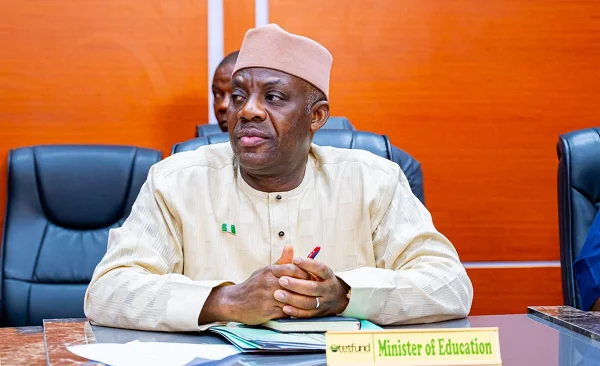Copyright tribuneonlineng

The Federal Government has declared that by 2027 the use of chalkboards for teaching of children in schools across the country will be totally eliminated, promising to ensure that all schools in Nigeria have smart boards in line with the global best practices. Minister of Education, Dr Olatunji Alausa, gave this indication in Abuja, during a ministerial roundtable meeting, reaffirming the commitment of the current admission of President Bola Ahmed Tinubu towards bridging the digital divide across the education sector in Nigeria. He also disclosed that beginning from 2026; the annual school census would be fully digitalised. The minister also revealed that over 60,000 tablets have been distributed to schoolchildren in Adamawa, Oyo, and Katsina states under the Airtech (Amazon Web Services) and BESDA programmes, with an additional 30,000 devices expected soon. He said: “We’ve also launched a smart board, two weeks ago,” he said. “Our goal is that by 2027, every school in Nigeria will have a smart board. “This is how we can cascade high-quality education to every child, irrespective of where they live, their background, or their parents’ social status.” Alausa explained that the deployment of interactive smart boards would gradually replace traditional chalkboards in public schools, enabling a more dynamic, engaging, and technology-driven classroom experience. He noted that the devices would allow teachers to integrate multimedia, digital textbooks, and real-time interactions into lessons, helping students to not only listen but also explore, engage, and participate actively in the learning process. Alausa also disclosed that the government is focusing on evidence-based intervention while emphasising the importance of data for effective planning and targeted intervention in addressing the challenges in the education sector including the menace of out-of-school children syndrome. He raised concern over the alarming rate of school dropouts across the country, revealing that about 24 million pupils who enrolled in primary schools failed to advance to senior secondary level. He said data from the digitised Nigeria Education Management Information System (NEMIS) platform showed that out of 30 million pupils captured from 21 states, only six million progressed to senior secondary school. According to him, statistics from NEMIS revealed a disturbing trend that poses a serious threat to Nigeria’s educational development and long-term human capital growth. “The information we’re seeing on that digital platform is scary,” Alausa said. “From the 21 states that have uploaded their data, we have about 30 million children in primary schools. “From primary to Junior Secondary School (JSS 1), that number drops between 10 and 20 million children. “We can’t find them. Then, from Junior Secondary to Senior Secondary, another four million have disappeared. It’s scary. However, now that we can see the data, we can start looking at evidence-based interventions and monitor outcomes,” the minister said. He stressed that the high dropout rate between primary and senior secondary levels underscores the need for targeted interventions to retain children in school, particularly those from disadvantaged backgrounds. Alausa explained that the biometrics of every schoolchild is being uploaded on the digitised platform to enable tracking and data-driven policy implementation. “It’s not manual anymore. Paper will be taken out completely,” he stated, noting that the Ministry plans to integrate West African Examinations Council (WAEC) and Joint Admissions and Matriculation Board (JAMB) data into the system. He expressed appreciation to the United Nations Children’s Fund (UNICEF) for its technical support and to President Bola Tinubu for providing financial and political backing for the initiative. Executive Secretary of Universal Basic Education Commission (UBEC), Aisha Garba, said the commission had embraced and incorporated technology 100 per cent in its operations and delivery of basic education including teaching processes in classrooms and the ongoing digitalisation of all public schools.



